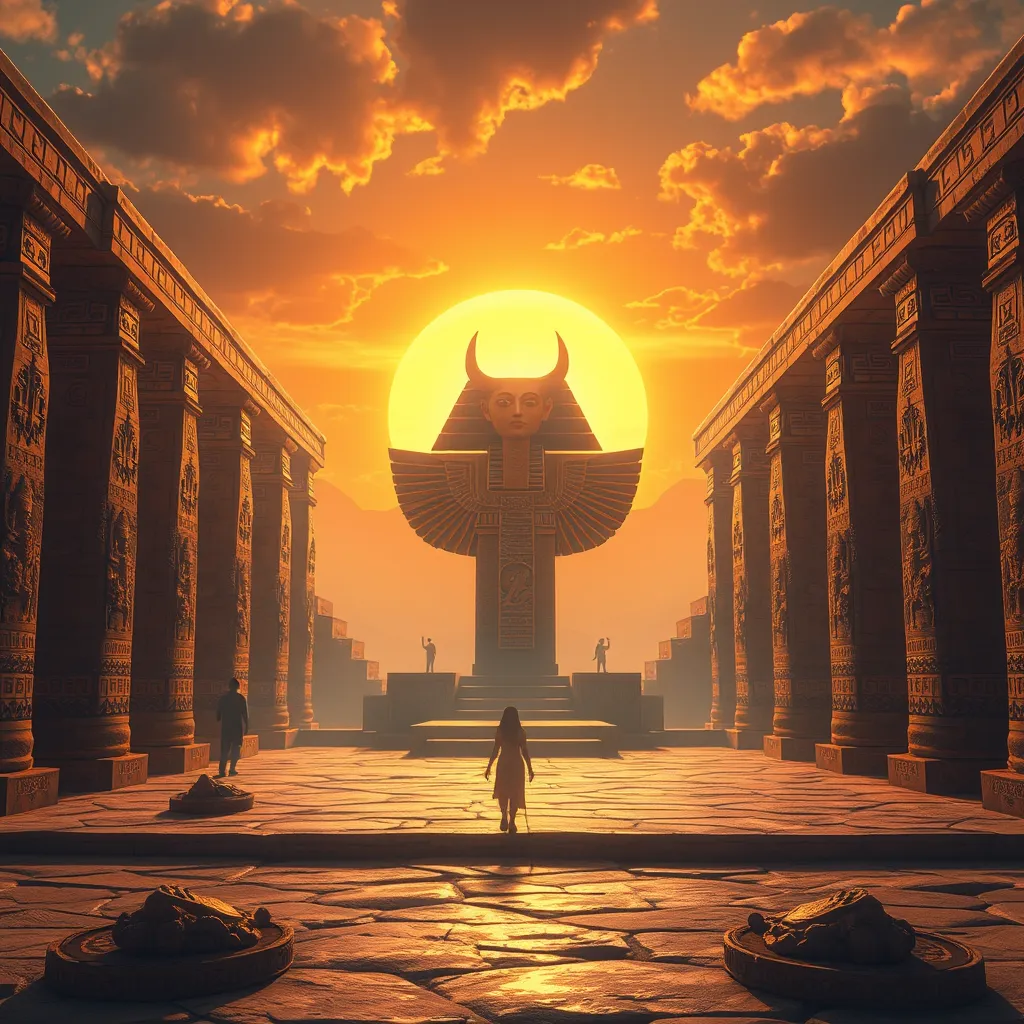The Duat: A Symbol of Hope and Renewal
I. Introduction
The Duat, often referred to as the Egyptian underworld, plays a pivotal role in Ancient Egyptian belief systems. It is a realm that embodies the transition between life and death, serving as a critical element in the culture’s understanding of existence beyond the earthly plane.
In Ancient Egyptian beliefs, the Duat signifies more than a place of the dead; it represents hope and renewal. This article will delve into the historical context of the Duat, its geography and structure, the journey through it, and its profound symbolism of hope, as well as its influence on modern culture and its reflection of human experience.
II. Historical Context of the Duat
The origins of the Duat are deeply rooted in Ancient Egyptian mythology. It was believed to be a complex realm that souls traversed after death, influenced by various deities and mythological narratives. The Duat was not merely an afterlife destination but a critical aspect of the funerary practices that permeated Egyptian culture.
Funerary practices included elaborate burial rites and the construction of tombs, which were designed to help guide the deceased through the Duat. The importance of the Duat can be compared to other mythological underworlds, such as Hades in Greek mythology or Sheol in Hebrew texts, though each holds unique characteristics and cultural significance.
III. The Geography and Structure of the Duat
The Duat is often described as a surreal landscape filled with various realms and features. It includes a multitude of terrains, such as rivers, mountains, and vast fields. One of the most notable locations within the Duat is the Field of Reeds, which symbolizes paradise for the deserving souls.
- Field of Reeds: Represents eternal life and abundance.
- Great Lake: A body of water that souls must cross.
- Mountain of the Duat: A place of trials and tribulations.
The geography of the Duat is rich in symbolic meanings, representing not just physical locations but also the spiritual journey of the soul. Each element serves as a metaphor for the challenges and rewards faced in the afterlife.
IV. The Journey Through the Duat
The journey through the Duat is a significant aspect of Ancient Egyptian beliefs about the afterlife. Upon death, the soul embarks on a perilous journey, facing various trials and tribulations that test its worthiness.
During this journey, the deceased encounters numerous obstacles, including mythological creatures and trials set by deities. The role of deities and guardians, such as Anubis and Osiris, is pivotal in guiding souls through the challenging terrain of the Duat.
- Anubis: The god of mummification, who guides souls to the afterlife.
- Osiris: The god of the afterlife, who judges the souls.
- Other guardians: Various deities that protect and challenge the souls.
V. Symbolism of Hope in the Duat
Hope is a central theme in the Duat, primarily through the concepts of rebirth and resurrection. The belief in life after death and the journey through the Duat signifies a hopeful outlook on mortality.
The Duat has influenced concepts of immortality in various ways, encouraging the belief that death is not the end but a transition to a new existence. Ancient texts and art often depict scenes of resurrection, such as the famous “Weighing of the Heart” ceremony, where the heart of the deceased is weighed against the feather of Ma’at, symbolizing truth and justice.
- Ancient texts: The Book of the Dead contains spells and guidance for the afterlife.
- Artistic depictions: Tomb murals often illustrate the journey through the Duat and the hope of rebirth.
VI. The Duat’s Influence on Modern Culture
The Duat continues to resonate in contemporary literature and art, often referenced as a symbol of transformation and renewal. Authors and artists draw inspiration from its rich mythology to explore themes of death and rebirth.
In modern narratives, the Duat serves as a backdrop for stories involving personal growth, redemption, and the cyclical nature of life. Its influence extends into popular culture, appearing in films, novels, and artworks that seek to capture the essence of hope and renewal.
- Literature: Many authors reference the Duat to illustrate complex themes of mortality.
- Film and media: The Duat often appears in films exploring ancient Egyptian themes.
- Art: Modern artists incorporate elements of the Duat to express spiritual journeys.
VII. The Duat as a Reflection of Human Experience
The themes of death, hope, and renewal are universal human experiences, making the Duat relevant across cultures. It reflects humanity’s innate desire to understand what lies beyond death and the hope for a continued existence.
Personal interpretations of the Duat’s symbolism can vary widely. For some, it represents the fear of the unknown, while for others, it embodies the promise of renewal and transformation. In today’s spiritual and psychological contexts, the Duat can be seen as a metaphor for personal struggles and the journey toward self-acceptance and growth.
VIII. Conclusion
In summary, the Duat serves as a powerful symbol of hope and renewal within Ancient Egyptian culture. Its significance lies in its representation of the journey after death and the promise of rebirth. The enduring legacy of the Duat continues to inspire exploration of the themes of mortality and transformation in human culture.
As we reflect on the Duat, we are encouraged to explore our own interpretations of hope and renewal. Whether through personal experiences or cultural narratives, the Duat invites us to consider the cyclical nature of life and the possibilities that lie beyond.




